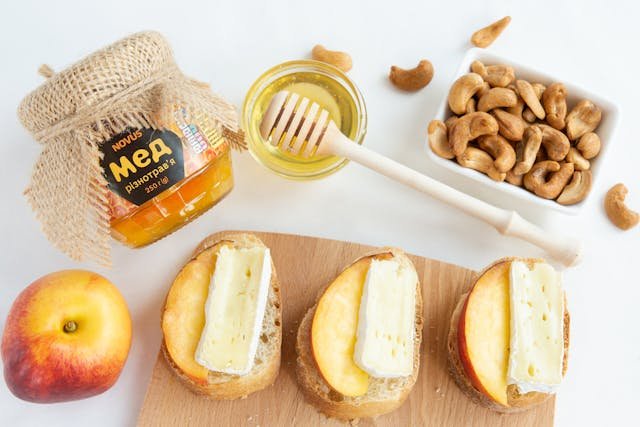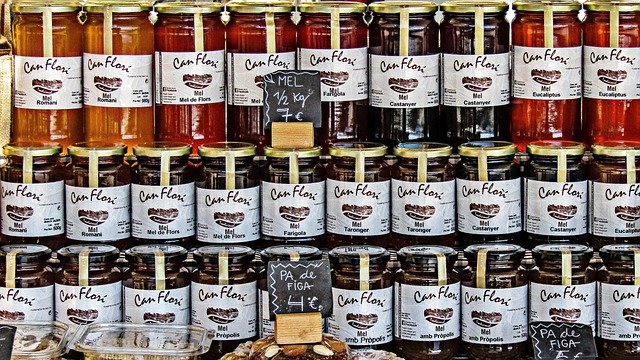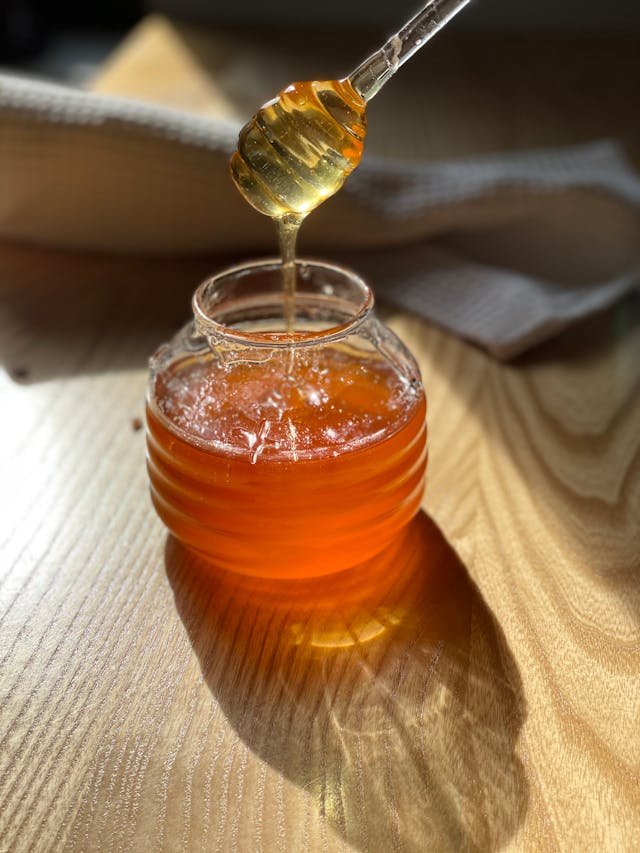Imagine a spoonful of liquid gold, harvested from some of the world’s most rainforest environments. Each drop features unique flavors and extraordinary health benefits. This is the beauty of honey from Oceania. It is a region renowned for its unparalleled biodiversity and natural beauty. Oceania’s honey offers a world of sweet possibilities. In this article, I will explore the fascinating origins of these exceptional honeys . I am also try to analyze their huge health benefits. I am trying to uncover the sustainable practices that ensure their continued production. Join me on a journey through Oceania’s honey landscapes, where nature’s sweetness meets science and tradition.
The Unique Flora of Oceania
Oceania’s rich and diverse flora makes it a paradise for honey production. From the rainforests of Tasmania to the wild landscapes of New Zealand, the region’s unique plants play a crucial role in creating some of the world’s finest honey. Key plants like the Manuka tree and Leatherwood tree provide pollen that gives Oceania’s honey its unique flavors and notable health benefits. This plant life not only showcases Oceania’s incredible biodiversity but also contributes to the unique qualities that set its honey apart. Discover how the unique flora of Oceania enhances the flavor and health benefits of its honey.
Varieties of Honey Found in Oceania

- Manuka Honey
- Origin: New Zealand
- Description: Manuka honey is renowned for its potent antibacterial properties and rich, earthy flavor. Derived from the nectar of the Manuka tree, it is widely used for its health benefits, including wound healing and immune support.
- Leatherwood Honey
- Origin: Tasmania, Australia
- Description: Leatherwood honey is celebrated for its unique and aromatic flavor profile. Harvested from the dense rainforests of Tasmania, this honey is often used in gourmet cooking and baking for its distinctive taste.
- Jarrah Honey
- Origin: Western Australia
- Description: Jarrah honey is known for its dark color and high antioxidant content. It has a rich, caramel-like flavor and is prized for its medicinal properties, including its ability to promote oral health and boost the immune system.
- Rewarewa Honey
- Origin: New Zealand
- Description: Rewarewa honey, also known as New Zealand honeysuckle honey, has a deep reddish color and a complex, malty flavor. It is often used as a natural sweetener and for its anti-inflammatory properties.
- Clover Honey
- Origin: New Zealand and Australia
- Description: Clover honey is a mild, light-colored honey with a delicate floral flavor. It is one of the most popular and widely available honeys in Oceania, known for its versatility in culinary uses.
- Blue Gum (Eucalyptus) Honey
- Origin: Australia
- Description: Blue Gum honey, derived from eucalyptus trees, has a smooth texture and a slightly medicinal flavor. It is rich in antioxidants and often used for its soothing effects on coughs and colds.
- Kanuka Honey
- Origin: New Zealand
- Description: Similar to Manuka honey, Kanuka honey comes from the Kanuka tree and has strong antibacterial properties. It has a lighter flavor compared to Manuka, with subtle floral notes.
- Macadamia Honey
- Origin: Australia
- Description: Macadamia honey is produced from the nectar of macadamia tree flowers. It has a rich, buttery flavor and is often used in baking and desserts to add a unique sweetness.
Sustainable Beekeeping Practices in Oceania
Sustainable beekeeping is vital in Oceania to protect both the environment and the honey industry. Beekeepers in the region employ several practices to ensure the health and productivity of their hives while minimizing their ecological footprint.
- Organic Farming Methods
- Many beekeepers in Oceania use organic farming techniques, avoiding synthetic pesticides and fertilizers. This helps maintain the purity of the honey and supports the health of bee populations.
- Habitat Preservation
- Protecting and preserving natural habitats is crucial. Beekeepers often work with conservationists to ensure that bees have access to diverse and abundant floral resources, which are essential for producing high-quality honey.
- Integrated Pest Management (IPM)
- IPM involves using natural predators, biological controls, and careful monitoring to manage pests and diseases in beehives. This reduces the need for chemical treatments and keeps bee colonies healthy.
- Ethical Beekeeping Practices
- Ethical beekeeping practices include avoiding the overharvesting of honey, ensuring that bees have enough food for winter, and practicing humane treatment of bees. These practices help maintain strong and resilient bee colonies.
- Supporting Biodiversity
- Beekeepers often plant native flowers and trees to support biodiversity. This not only provides bees with nectar and pollen sources but also helps sustain the local ecosystem.
- Education and Community Involvement
- Many beekeepers engage in educational outreach and community involvement to raise awareness about the importance of bees and sustainable practices. This helps build a network of support for beekeeping and conservation efforts.
- Use of Renewable Resources
- Utilizing renewable resources and eco-friendly materials for beekeeping equipment, such as wooden hives and natural wax, further reduces the environmental impact.
- Monitoring and Research
- Continuous monitoring and research into bee health and environmental impacts are essential. Beekeepers often collaborate with scientists to stay informed about best practices and emerging threats to bee populations.
By adopting these sustainable beekeeping practices, Oceania’s beekeepers play a crucial role in protecting the environment, supporting biodiversity, and ensuring the long-term viability of the honey industry.
Health Benefits of Oceania's Honey

Oceania’s honey varieties are not only delicious but also packed with numerous health benefits. From their antibacterial properties to their rich antioxidant content, these honeys are powerful natural remedies that promote overall well-being.
- Antibacterial Properties
- Manuka honey, in particular, is renowned for its strong antibacterial effects, thanks to its high levels of methylglyoxal (MGO). It is often used to treat wounds, cuts, and infections.
- Rich in Antioxidants
- Varieties like Jarrah and Blue Gum honey are rich in antioxidants, which help fight free radicals in the body. This can reduce the risk of chronic diseases and support overall health.
- Boosts Immune System
- Regular consumption of honey can enhance the immune system. The natural enzymes and compounds found in Oceania’s honey help the body fight off illnesses and infections.
- Soothes Sore Throats and Coughs
- Honey has long been used as a natural remedy for sore throats and coughs. Its soothing properties can help reduce irritation and provide relief from respiratory issues.
- Promotes Digestive Health
- Honey, especially Manuka honey, has prebiotic properties that support gut health. It promotes the growth of good bacteria in the digestive system, aiding in digestion and improving gut flora.
- Anti-inflammatory Effects
- The anti-inflammatory properties of honey can help reduce inflammation in the body. This can be beneficial for conditions like arthritis and other inflammatory diseases.
- Wound Healing and Skin Care
- Manuka honey is often used in medical-grade products for wound healing. Its antibacterial and anti-inflammatory properties make it effective in treating burns, ulcers, and other skin conditions.
- Enhances Energy Levels
- Honey is a natural source of carbohydrates, providing a quick energy boost. It can be especially beneficial for athletes and those needing a natural pick-me-up.
- Improves Oral Health
- Certain honey varieties have been shown to improve oral health by reducing plaque and preventing gum disease. Jarrah honey, in particular, is noted for its benefits to dental health.
- Supports Heart Health
- The antioxidants and anti-inflammatory compounds in honey can support heart health by reducing cholesterol levels and improving blood circulation.
Incorporating Oceania’s honey into your diet can provide these impressive health benefits, making it a valuable addition to a healthy lifestyle. Whether used as a natural sweetener, a soothing remedy, or a topical treatment, the honey from this region offers a range of wellness advantages.
Culinary Uses of Oceania's Honey

Oceania’s honey varieties are not just healthful but also incredibly versatile in the kitchen. Their unique flavors and natural sweetness can enhance a wide range of dishes, from sweet treats to savory meals.
- Natural Sweetener
- Use Oceania’s honey as a natural sweetener in place of sugar in your tea, coffee, or smoothies. It adds a subtle, rich flavor while providing additional health benefits.
- Baking
- Honey is a fantastic ingredient for baking. It keeps cakes, cookies, and breads moist and adds a depth of flavor. Manuka and Leatherwood honey are especially good for adding a unique taste to your baked goods.
- Marinades and Glazes
- Incorporate honey into marinades and glazes for meats, such as chicken, pork, and fish. Its natural sugars caramelize beautifully, adding a glossy finish and a hint of sweetness.
- Salad Dressings
- Create delicious salad dressings by mixing honey with mustard, olive oil, vinegar, and herbs. The honey adds a perfect balance to tangy and savory flavors.
- Desserts
- Drizzle honey over desserts like yogurt, ice cream, pancakes, waffles, and fresh fruit. It enhances the flavors and adds a touch of natural sweetness without overpowering the dish.
- Sauces and Condiments
- Add honey to sauces and condiments, such as barbecue sauce, chutney, or mustard. It balances spicy and tangy flavors and adds complexity to the dish.
- Breakfast Dishes
- Honey is a delightful addition to breakfast foods. Stir it into oatmeal, spread it on toast, or mix it into granola and yogurt bowls for a nutritious start to your day.
- Beverages
- Use honey to sweeten beverages like lemonade, iced tea, or cocktails. Its natural sweetness enhances the flavors without the need for refined sugar.
- Cheese Pairings
- Pair honey with cheeses for a sophisticated snack or appetizer. The sweet and savory combination is particularly delightful with cheeses like blue cheese, goat cheese, and aged cheddar.
- Canning and Preserving
- Incorporate honey into canning and preserving recipes. It not only acts as a natural preservative but also enhances the flavors of fruits and vegetables.
Experimenting with Oceania’s honey in your cooking can elevate your dishes with its unique flavors and health benefits. Whether you’re baking, glazing, or simply adding a drizzle, the honey from this region is a versatile and delicious ingredient
Challenges Facing the Honey Industry in Oceania
- Climate Change: Increasing temperatures and unpredictable weather patterns can affect flowering seasons and honey production.
- Pesticide Use: Agricultural practices may expose bees to harmful pesticides, impacting bee health and honey quality.
- Habitat Loss: Urbanization and deforestation reduce floral diversity, limiting bees’ access to varied nectar sources.
- Disease and Pests: Varroa mites and other pests can devastate bee colonies, leading to decreased honey yields and colony collapse.
- Competition with Imported Honey: Cheap imports may undercut local honey prices, affecting market viability for Oceania’s producers.
- Regulatory Challenges: Meeting stringent export regulations and quality standards can be costly and challenging for smaller beekeepers.
- Public Awareness: Educating consumers about the benefits of locally produced honey versus mass-produced alternatives is crucial for market demand.
- Resource Management: Sustainable water and land use practices are essential to maintain healthy floral ecosystems for bees.
- Labor Shortages: Finding skilled beekeepers willing to work in remote or challenging environments can be difficult, impacting production.
- Biosecurity Concerns: Preventing the spread of diseases and pests, especially in regions with unique native species, requires stringent biosecurity measures.
Conclusion
I have tried to find a world of richness and diversity in Oceania’s honey. It goes beyond its sweet taste. Oceania’s honey is not only a treat for the taste buds. It is proof of the region’s commitment to sustainability and ethical beekeeping practices. Beekeepers here work to save natural habitats. They also protect bee health and ensure the purity of their golden harvests.
According to health benefits, it’s clear that Oceania’s honey isn’t just food . It can be use as medicine. Its ability to protect sore throats and aid in wound healing. It also promotes digestive health. This makes it a valuable addition to any wellness activity.
On a personal note, I appreciate the link between nature’s bounty. And, the link to human cleverness is complex. For example, each taste of manuka honey creates a sense of connection. It is to the landscapes and communities that produce it.
As a conclusion, I invite you to explore Oceania’s honey for the ample benefits they can produce. We can support ethical production. It will savor Oceania’s honey for generations.



